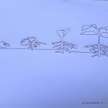Most Dangerous Trees You Should NEVER Touch
Most Dangerous Trees You Should NEVER Touch
The Manchineel Tree found in the Caribbean has sap containing irritants that can blister skin and blind eyes on contact. Rainwater dilutes the sap, making standing under the tree risky as tainted droplets fall. Breathing evaporated sap can burn lungs. Locals mark Manchineel trunks with red bands as warnings. The tree also bears green "beach apple" fruit that appears sweet but contains toxins. Eating the fruit causes intense burning throat pain that prevents swallowing, lasting for hours. While some find relief chugging cold drinks, the fruit can also blister mouths and disrupt digestion. Any unfamiliar fruit on Caribbean beaches lacking umbrellas should be avoided.
The Strychnos Nux Vomica tree's orange, apple-like fruits contain strychnine poison, highest in the seeds. Consuming large amounts causes uncontrolled skeletal muscle spasms and convulsions leading to asphyxiation from arching of the spine. Though native to Asia, the tree limited spread of bubonic plague by killing plague-carrying rats. Today it remains a rat poison source, so is best avoided by humans.
In Australia, 100-foot-tall Bunya Pines have sharp, rigid leaves requiring protective equipment. Their seed cones can weigh over 40 pounds, like a small child, and fall from great heights with force equaling one ton. In 2015, a man resting under a Bunya Pine was critically injured when a 16-pound cone fell on his head, requiring surgery and causing likely permanent brain damage. While seeds are edible, falling cones are extremely hazardous.
The Sandbox Tree of the Americas is covered in dagger-like, inch-long bark spikes and secretes a blinding eye irritant sap. Its fruit resembles decorative pumpkins but contains seed capsules that explode on maturity like grenades, flinging flattened seeds at 150mph. This dispersal method provides resources, but explosions sound like gunshots. The tree is best avoided.
In Australia, the innocent-looking Gympie-Gympie plant's soft leaves and white fur hide neurotoxin needles causing agonizing pain unchanged by time unless removed from skin. Legends describe horses maddened and driven off cliffs by stings. A study described the sting as both hot acid burning and electrocution. It equals 30 wasp stings. Breathing airborne needles also harms lungs and respiratory systems.
The Pisonia Tree of the Caribbean attracts nesting birds with sticky seeds that adhere to feathers, incapacitating flight and leading to starvation or predation. Scientists don't understand the evolutionary benefit of killing birds. Maybe it deters extinct predators or is a useless leftover trait. Either way, the tree seemingly hates birds.
While myths say coconuts kill 150 people annually, the claim is exaggerated. But 4-pound falling coconuts hitting heads at 50mph do injure and occasionally kill people. Authorities have removed coconut trees from some beaches for safety after fatal strikes. Napping under trees bearing falling fruit poses risks.
Shipworms in seaside trees worldwide resemble long clams with soft bodies burrowing into wood, creating tunnels that compromise structures. In the Philippines they are a favored delicacy but also jeopardize mangrove trees, risking collapse atop hunters.
The beautiful Brugmansia tree of South America is extremely toxic, paralyzing and inducing terrifying hallucinations. A man drinking its tea cut off his tongue and trumpet during a vivid hallucination. The tree is considered an ornamental patio plant but can be fatal to humans and animals if ingested.
In Brazil, edible Jaboticaba berries resemble alien eggs growing directly on tree trunks, but resemble other poisonous black berries. Pokeweed and Deadly Nightshade berries appear similar but cause violent reactions or death. Only Brazilians can safely identify Jaboticaba.
In the US, the Honey Locust Tree has 4-11 inch thorns below its orange leaves, longer than legal flick knives. Stories describe them piercing skin and fracturing bones. They likely evolved to deter extinct Ice Age megafauna. A related tree adds toxic thorns. Both are best avoided.
In Africa, the Whistling Thorn Acacia houses stinging fire ants in hollow thorns, unleashing swarms to attack intruders. Abandoned thorns whistle eerily when wind blows through, warning of danger. If you hear odd whistling on the savanna, run away.






Comments
There are no comments for this story
Be the first to respond and start the conversation.